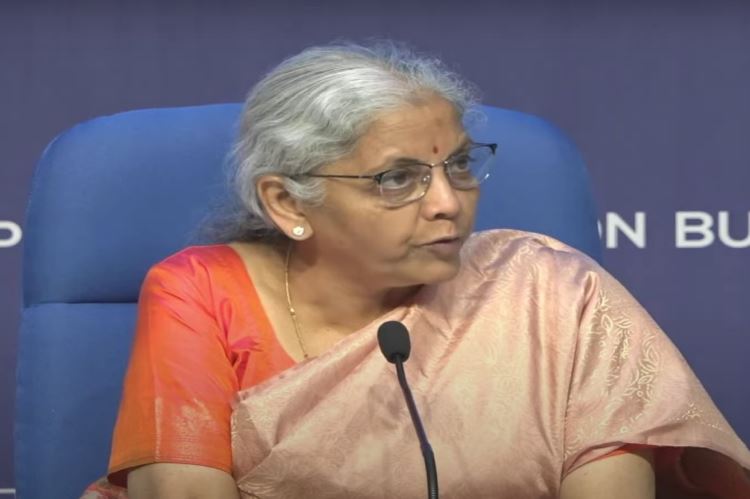Budget 2025 focuses on capital expenditure, subsidy cuts: The Union budget for the financial year 2024-25 is a blend of growth orientation and fiscal consolidation, showcasing an effort to maintain economic stability while fostering development. Amidst a global economic landscape marked by uncertainty, this budget leverages buoyant tax collections and strategic capital spending to navigate the fiscal challenges.
A striking feature of Budget 25 is its effort to restrict the fiscal deficit to 5.9% of GDP, a commendable feat given the capital expenditure thrust and the lower than anticipated nominal GDP in FY24. This has been made possible by a surge in tax collections, which has exceeded expectations due to the enhanced profitability of public sector undertakings.
The forecast for tax collections to grow by 10.4% in FY25, despite a slowdown from the 15% seen from April to November 2023, suggests a normalisation of corporate margins and income growth in the upcoming fiscal year. Moreover, the stability of non-tax revenues adds another layer of strength to the government’s fiscal strategy.
READ I Budget 2025 focuses on core groups, seeks sustainable growth
Budget 2025 pushes capital expenditure
The budget 2025 outlines a 15% increase in capital spending with a focus on the railways and roads sectors, reflecting a clear intent to boost infrastructure development. This increase comes in the backdrop of a real estate upcycle and a rise in capacity utilisation, hinting at a sustained uptick in private sector capital expenditure in the years ahead. On the flip side, revenue spending is expected to be restrained, primarily due to a reduction in fertilizer subsidies, underscoring the government’s commitment to fiscal discipline.
While the significant increase in capital expenditure is undoubtedly positive for infrastructure development, it also puts pressure on the government’s ambitious fiscal deficit target. Striking a balance between infrastructure goals and maintaining fiscal discipline will require careful monitoring and management of borrowing. Exceeding sustainable debt levels could have long-term repercussions for the economy, and ensuring adherence to responsible borrowing practices is crucial for long-term financial stability.
The government’s fiscal roadmap is ambitious, seeking to bring the fiscal deficit down to 5.3% of GDP in FY25. This entails a gross and net market borrowing of Rs 15.2 trillion and Rs 11.5 trillion, respectively. Such a borrowing strategy, aligned with the anticipated inflows from bond index inclusion, suggests a favourable demand scenario for Indian government bonds. This approach not only demonstrates the government’s dedication to fiscal consolidation but also its strategic foresight in managing the country’s debt profile effectively.
Tax revenue dynamics and expenditure management
The budget 2025 reveals an optimistic outlook on direct tax collections, which are expected to grow by 11% in FY25, fuelled by robust collections in FY24. This growth, however, is set against a backdrop of normalisation in corporate tax collections and a potentially slower growth in personal income tax collections due to a decline in hiring in sectors like IT and startups.
However, this impressive performance might not be entirely replicable in the future. Normalisation of corporate margins, coupled with potential slowdowns in sectors like IT and startups, could lead to slower growth in personal income tax collections. This possibility necessitates careful consideration of future expenditure plans and potential adjustments to ensure their sustainability in the face of potentially lower-than-projected revenue streams.
On the expenditure side, the government plans to curtail subsidies, projecting a decrease in fertilizer subsidies while keeping the food subsidy bill around Rs 2.1 trillion. Such targeted expenditure management is indicative of the government’s strategic prioritisation of fiscal resources.
While the government’s intention to curtail subsidies, particularly in the fertilizer sector, aligns with its fiscal consolidation goals, it is essential to acknowledge the potential impact on farmers’ livelihoods. Implementing targeted support programmes and exploring alternative measures to mitigate the impact of subsidy reductions will be crucial to ensure social equity and minimise potential disruptions to the agricultural sector.
Economic policy and growth prospects
As budget 2025 is a vote on account, anticipation builds for the full budget presentation, which is expected to provide a broader direction on economic policy for the next five years. This direction is likely to emphasise infrastructure spending, fuelled by disinvestment proceeds, and reforms aimed at accelerating private sector capital expenditure and foreign direct investment inflows in manufacturing. With the government’s direct tax collections running ahead of estimates and a strategic approach to managing both tax and non-tax revenues, the fiscal landscape appears robust.
The projected GDP growth of 6.3% in FY25, following the National Statistical Office’s estimate of 7.3%, places India on a promising economic trajectory. Despite the challenges, the government’s budget for FY 2024-25 reflects a balanced approach to fostering growth, managing expenditures, and pursuing fiscal consolidation. This strategic fiscal management underscores India’s resilience and adaptability in the face of global economic fluctuations, positioning it as a stable and growing economy on the world stage.
The global economic landscape remains riddled with uncertainties. Geopolitical tensions, fluctuating oil prices, and potential recessions in major economies are just some of the external factors that could pose risks to India’s economic growth. While the budget projections are based on current estimates, remaining adaptable and prepared to adjust course in response to evolving global conditions will be vital for ensuring the budget’s continued effectiveness in the face of unforeseen challenges.
While this interim budget provides a valuable glimpse into the government’s immediate fiscal plans, the full picture will only emerge with the presentation of the complete budget later this year. Beyond FY25, the long-term policy direction and priorities remain unclear, potentially impacting long-term economic planning for businesses and investors. Awaiting the full budget and closely examining the broader policy roadmap will be essential for gaining a more comprehensive understanding of the government’s long-term economic vision and its potential implications for various stakeholders.

